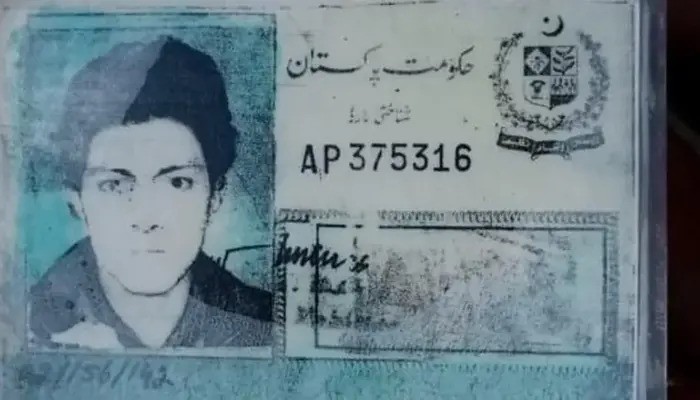In a chilling reminder of the realities of climate change, the body of a man who vanished 28 years ago has emerged from a melting glacier in Pakistan’s remote Kohistan region. The find, made by a shepherd in the Lady Valley, underscores how global warming is accelerating glacial melt and uncovering long-lost secrets.
The shepherd, Omar Khan, made the startling discovery while grazing livestock. What he saw stunned him—a fully intact human body, still clothed, preserved beneath the ice for nearly three decades. Alongside the body lay an old, faded national ID card bearing the name “Naseeruddin.”
A Disappearance Lost in Time
Authorities soon confirmed that the body belonged to Naseeruddin, a man reported missing in June 1997. He had disappeared during a snowstorm while traveling on horseback through the valley with his brother, Kathiruddin.
According to police, the brothers were fleeing their village due to a family dispute. Naseeruddin reportedly stepped into a cave and never returned. Despite extensive local searches at the time, no trace of him was ever found—until now.
A Brother’s Memory Rekindled
Speaking to BBC Urdu, Kathiruddin vividly recalled the last day he saw his brother. “We reached the valley in the morning. By afternoon, he walked into the cave. I waited… but he didn’t come back. I searched. I brought others to help. But we couldn’t find him.”
Decades later, this painful mystery has finally ended. For Kathiruddin and the family Naseeruddin left behind—his wife and two children—the discovery brings long-awaited closure.
Read: Islamabad High Court Dismisses Petitions Against Bahria Town Property Auction
Preserved by Ice
Experts say the glacier’s frigid environment preserved the body in extraordinary condition. Professor Muhammad Bilal, who heads the Department of Environment at Comsats University in Islamabad, explained the science behind this natural preservation.
“When a person falls into a glacier, the body freezes almost instantly,” said Prof Bilal. “Because there’s little oxygen and moisture in the ice, decomposition halts. Instead, the body becomes mummified.”
This unique process helps explain why the clothes, skin, and features of Naseeruddin’s body remained largely untouched by time.
Climate Change Uncovering the Past
The Lady Valley, like many high-altitude regions in Pakistan, has experienced drastic changes in recent years. A steady drop in snowfall has left glaciers exposed to direct sunlight. As a result, melting has accelerated, revealing what was once entombed in the ice.
Environmentalists point to this case as more than a personal tragedy—it is evidence of the broader impact of climate change on South Asia’s fragile ecosystems.
“Increased glacier melt is not just an environmental concern; it’s a human one,” said Prof Bilal. “It alters landscapes, disrupts water supplies, and in cases like this, even brings back pieces of history.”
Local Reactions and Community Response
The discovery has sparked interest and emotion across the Kohistan region. As soon as the police confirmed the identity, residents began sharing their memories of Naseeruddin. Some recalled his abrupt departure during the feud. Others remembered him as a hardworking man trying to protect his family.
Omar Khan, the shepherd who found the body, described the moment with disbelief. “It looked like he had just fallen yesterday. The body was untouched. His clothes weren’t even ripped,” he said.
His account has since circulated widely, drawing attention to the dramatic intersection of natural forces and human history.
Rising Worries Over Glacier Retreat
Pakistan, home to more than 7,000 glaciers, is one of the countries most vulnerable to climate change. In recent years, rapid glacial retreat has raised alarms among scientists and policymakers. Not only does it threaten water supplies for millions, but it also increases the risk of glacial lake outburst floods.
Experts warn that more discoveries like Naseeruddin’s may follow, especially in regions where trekking routes, past settlements, or livestock paths once ran near now-receding glaciers.
A Story Frozen in Time
For Naseeruddin’s family, the return of his body after 28 years brings bittersweet relief. For scientists and observers, it is yet another reminder of how a warming planet is slowly reshaping both landscapes and legacies—one melting glacier at a time.
Follow us on Instagram, YouTube, Facebook,, X and TikTok for latest updates
